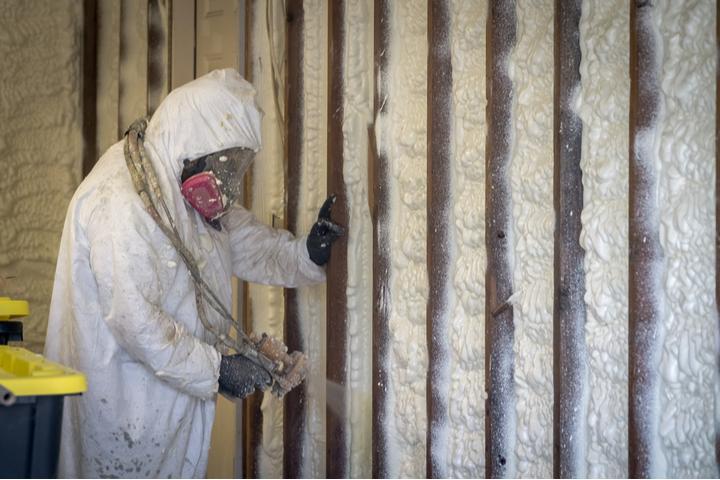Foam Blowing Agents

What is the challenge?
Foam products are manufactured using blowing agents that produce a chemical reaction to form a hardened cellular structure. These blowing agents are used in a variety of manufacturing applications, including insulation, marine buoyancy, ventilation and refrigeration.
Hydrofluorocarbons (HFCs), which are often used in foam blowing agents, are extremely potent greenhouse gasses (GHGs). HFCs were developed in the 1990s to replace ozone depleting substances (ODS) like chlorofluorocarbons (CFCs). In recent years, however, scientists discovered that most HFCs have extremely high global warming potential (GWP) – trapping thousands of times more heat than carbon dioxide.
Foam blowing agents are emitted into the atmosphere during manufacturing, use and, largely, at the end of life when they are discarded. Since it is difficult and expensive to extract blowing agents from foam at the end of life for reuse or destruction, 100% of foam blowing agents eventually get emitted into the atmosphere during the foam lifecycle.
Independent industry research data shows that more than 80% of foam blowing agents in use today are still high-GWP compounds. Since these blowing agents will eventually leak into the atmosphere, it is very important to switch to low-GWP alternatives.
What is the solution?
Experts still agree that the use of foam blowing agents, in general, is important for efforts to improve energy efficiency in the utility sector. For example, blowing agents are often used for commercial and residential insulation, and estimates suggest that improved insulation in the residential building sector could lower total home energy costs by an average of 11 percent.
However, to reduce climate impact, manufacturers must transition away from HFC-based foam blowing agents and adopt alternatives with much lower GWP. The US Environmental Protection Agency (EPA) currently has a list of accepted alternatives for foam blowing agents under its Significant New Alternatives Policy (SNAP) program.
These alternatives are determined by reviewing a variety of characteristics, including each proposed substitute’s ozone depletion potential, flammability, toxicity, GWP, and occupation and consumer health and safety.
How can carbon markets help unlock the solution?
There is industry interest in adopting foam blowing agents that do not deplete the ozone and have low GWPs. Nevertheless, many manufacturers have not adopted low GWP blowing agents due to technical and financial barriers that currently make HFC-based blowing agents more economically attractive. Independent industry research data shows low-GWP blowing agents – such as hydrofluoroolefin (HFO) – are around 3 times more expensive than HFCs. This is further exacerbated by the ongoing global supply shortages of HFOs that has led many manufacturers to cut down production of low GWP foams.
Finance from the sale of carbon credits can help break through these barriers. Credits are determined by the emissions avoided through the integration of low-GWP blowing agents into the manufacturing process. The revenue from these credits is then used as leverage to cover upfront capital costs for manufacturers looking to transition away from traditional HFC-based blowing agents.
ACR’s methodology
ACR’s approved Methodology for the Quantification, Monitoring, Reporting and Verification of Greenhouse Gas (GHG) Emission Reductions from the Transition to Advanced Formulation Blowing Agents in Foam Manufacturing and Use 3.0 is an important tool to catalyze support for the manufacturing industry’s transition away from high-GWP foam blowing agents.
The methodology defines the eligible blowing agents that contribute less to GHG emissions, and it incorporates data demonstrating the low market penetration rates of the eligible blowing agents to date. Since all blowing agents in foam products are eventually emitted, the methodology allows crediting for 100% of the low-GWP blowing agent used to manufacture foam.
Each project is required to include a monitoring, reporting and verification plan that meets the ACR Standard. This includes documentation of the baseline blowing agent used and records quantifying the amount of the eligible blowing agent used during the project’s timeline. The GWP for baseline blowing agent is lower for states that restrict use of high GWP blowing agents.
Additional benefits
Once manufacturers overcome the initial capital costs associated with transitioning to alternative foam blowing agents, they can likely expect improved performance and efficiency.
Among the benefits noted by manufacturers that have made the transition are a lower volume of blowing agents required to produce the foam, lower flammability, and lower toxicity compared to HFC-based blowing agents.